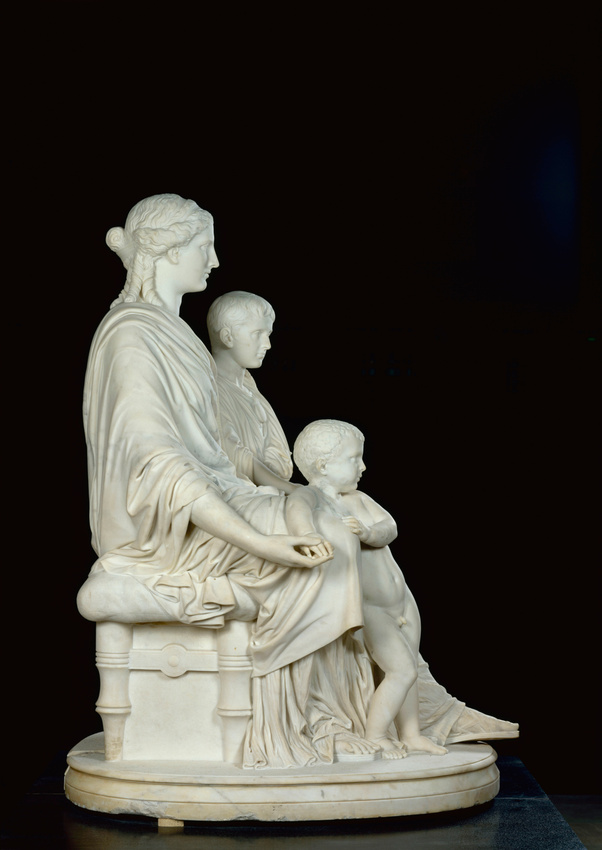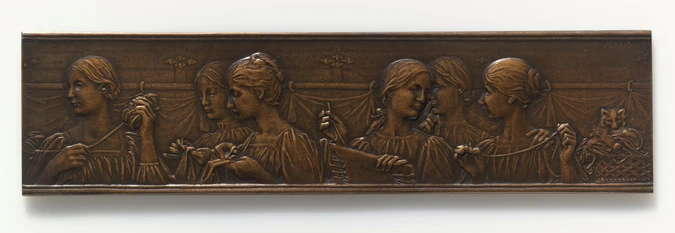Cornélie, mère des Gracques
This rigidly symmetrical circular group stages heroes from Antiquity : Caïus and Tiberus Gracchus and Cornelia, their mother. The pyramidal construction and their attitudes allow the spectator to read the characters' psychology : the younger son, Caïus, is full of energy ; his elder, Tiberus, is more thoughtful and is shown with a diploma ; Cornelia, who is looking after them and sits in majesty, calm and dignified, seems to be wording the phrase well-known of all visitors to 19th-century Salons : to the elegant Roman ladies, proud of their costumes, she replied : "Here are my jewels", presenting her two sons.
Archaeological discoveries of statues of Antiquity, often deprived of their initial colours, influenced neo-classical art. The vacant gaze endows Cornelia's face with an apparent impassivity and distance. The subject matter, related to the civic ideal and classical culture of the time, the careful, almost archaeological reconstruction of the drapes, the harmonious composition are as many characteristic elements of a neo-classical artwork faithful to the taste of the time.









